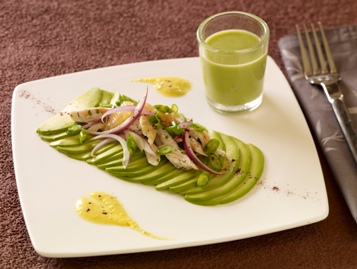Open Wide for Caribbean, Japanese and Thai
28 February 2011
 Lovers of ethnic foods are exhibiting a greater taste for exotic flavors.
Lovers of ethnic foods are exhibiting a greater taste for exotic flavors.
Consumers love tickling their taste buds with Italian, Mexican and Asian cuisines—so much that all three have become so mainstream, they’re hardly considered ethnic anymore. According to Mintel’s Global New Products Database (GNPD), however, lesser-known ethnic fare has enjoyed robust product growth in recent years, as ethnic-food lovers and their palates are hungry for more exotic ingredients and flavors.
In 2010 alone, Mintel’s GNPD tracked a 150% increase from 2009 in new food items that contained “Caribbean” in the product description. “Japanese” product launches soared more than 230% from 2009 to 2010. Meanwhile, “Thai” products launches saw a 68% increase from 2009- 2010.
“Italian, Mexican and Asian cuisine are the more mainstream, popular ethnic cuisines,” says David Lockwood, senior analyst at Mintel. “But Thai, Caribbean and Japanese foods are seeing healthy growth, and consumers seem to be getting more comfortable with a wider variety of ethnic flavors.”
This increase in product launches may be due to the wide variety of outlets consumers have at their disposal to learn more about ethnic foods that aren’t common to their ethnic backgrounds. In fact, 26% of ethnic food-lovers say they were introduced to the cuisine by TV programs, newspapers or magazines that feature cuisine from other countries.
Twenty-three percent of ethnic-food users say they were spurred to try them after reading cookbooks that include recipes for dishes that are popular in other countries. Additionally, 18% developed a taste for ethnic chow after travelling abroad and 25% say they were introduced to their favorite ethnic fare because they live in a diverse neighborhood where the food and ingredients are readily available.
“In keeping with Mintel’s ‘professionalization of the amateur’ CPG trend, consumers are becoming more interested in trying out complicated ethnic dishes at home that would usually be prepared by a chef in a restaurant,” notes Lockwood. “Cooking programs, culinary magazines and recipe Web sites are an easy way to get more comfortable with ethnic food preparation.”
Photo caption: This “carpaccio” of fresh California avocado and chicken salad by Chef Matthew Vasquez of Eurest Dining Services features the Thai concept of “pulled” tea, served on the side in a small glass. The dish exhibits authentic Thai flavors such as hibiscus, fish sauce and yellow curry.
